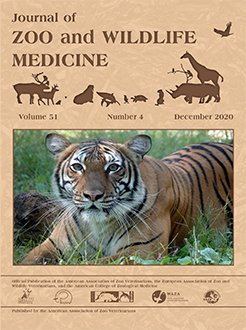Flunixin meglumine is the most commonly used nonsteroidal anti-inflammatory drug used to treat elephants; however, no pharmacokinetic study for flunixin has yet been conducted in these species, and dosages used range widely. Pharmacokinetic parameters of flunixin were determined in African (Loxodonta africana) and Asian (Elephas maximus) elephants after single-dose oral administration of 0.8 and 1.5 mg/kg flunixin paste in each species. Elephant compliance to oral administration of banamine was occasionally challenging, especially among older, female African elephants. After administration of 0.8 mg/kg flunixin, mean serum concentrations peaked in approximately 1.3 hr at 2.1 ± 0.8 µg/ml for Asian (n = 8) and 2.8 hr at 2.5 ± 0.7 µg/ml for African (n = 8) elephants. Dosages of 1.5 mg/kg flunixin resulted in mean serum concentration peaks of 7.2 ± 1.5 µg/ml in Asian elephants (n = 7) and 4.4 ± 0.7 µg/ml in African elephants (n = 6). However, multiple-dose trials using 1.1 mg/kg flunixin resulted in peak serum concentrations that were again less in Asian than African elephants (2.7 µg/ml versus 4.4 µg/ml, respectively). Asian elephants consistently had lower time to maximal concentration, greater area under the curve, and longer mean residence times compared with African elephants. In other species, flunixin is excreted unchanged primarily via hepatic routes with small amounts in the urine. Asian elephants may engage in some level of enterohepatic recycling of flunixin, as was previously reported for phenylbutazone. This study supports that different oral dosing regimens should be used for Asian (1.0 mg/kg SID) and African (1.2 mg/kg SID) elephants, and oral administration techniques used should ensure complete dosage delivery.
How to translate text using browser tools
12 January 2021
PHARMACOKINETICS OF ORALLY ADMINISTERED FLUNIXIN MEGLUMINE IN AFRICAN (LOXODONTA AFRICANA) AND ASIAN (ELEPHAS MAXIMUS) ELEPHANTS
Ursula Bechert,
J. Mark Christensen,
Jack Kottwitz,
Dawn Boothe,
Sultan Alshahrani,
Sumeia Mohammed
ACCESS THE FULL ARTICLE





